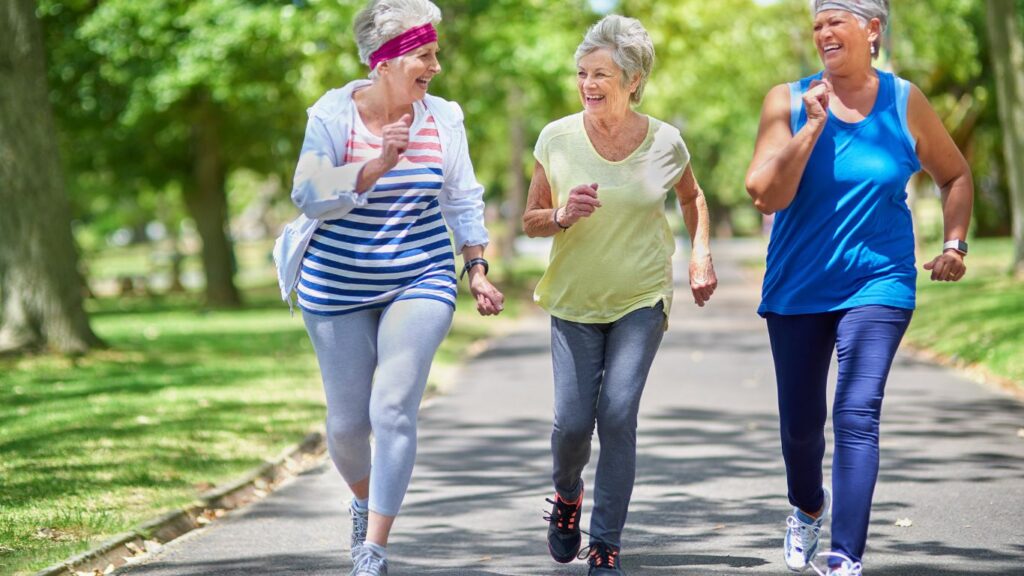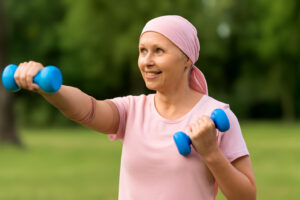How to Stay Active with Lymphedema
Definition of Lymphedema and Its Impact on Physical Activity
Lymphedema is a chronic condition caused by the buildup of lymph fluid in body tissues, leading to swelling, most commonly in the arms or legs. This condition can result from damage to the lymphatic system due to cancer treatment, surgery, or other factors. The persistent swelling and discomfort often discourage individuals from engaging in physical activity, further exacerbating their symptoms.
Importance of Staying Active for Overall Health and Well-Being
Despite the challenges, exercise is essential for managing lymphedema. Regular physical activity helps improve lymphatic drainage, strengthen muscles, and maintain a healthy weight—all crucial factors in reducing swelling and enhancing quality of life. Staying active can boost mental health, alleviate stress, and foster a sense of accomplishment.
Overview of the Blog Post’s Focus
This article will explore practical strategies and insights for staying active with lymphedema. From safe exercise options to tips for creating a sustainable routine, you’ll discover how to embrace physical activity while effectively managing symptoms.
Understanding Lymphedema
Explanation of Lymphedema Causes and Symptoms
Lymphedema occurs when the lymphatic system is compromised for transporting lymph fluid. It can result from lymph node removal, radiation therapy, infections, or genetic predisposition. Primary lymphedema is inherited, while secondary lymphedema develops later, often after cancer treatment. Common symptoms include swelling, a feeling of heaviness, and tightness in the affected area.
How Lymphedema Affects Mobility and Exercise
Swelling and discomfort can make mobility challenging, particularly in the lower body. Tasks like walking or standing for long periods may strain muscles and joints. Additionally, the fear of exacerbating symptoms can deter individuals from exercising. However, when done correctly, exercise can help improve the flow of lymph fluid, strengthen affected areas, and reduce the risk of further complications.
Importance of Consulting Healthcare Professionals for Personalized Advice
Before starting any exercise program, you must talk to your doctor or a certified lymphedema therapist. These professionals can recommend specific exercises that are safe and effective based on your condition, ensuring you avoid injury and maximize benefits.
Safe Exercise Options
Low-Impact Activities Suitable for Individuals with Lymphedema
Engaging in low-impact exercises minimizes strain on the affected area while promoting lymphatic drainage. Consider these activities:
- Walking: A gentle way to improve circulation and engage calf muscles without overexertion.
- Swimming: The buoyancy of water supports the body, making it an excellent choice for reducing swelling and promoting lymphatic flow.
- Cycling: Stationary or outdoor cycling helps strengthen leg muscles and maintain joint flexibility.
Incorporating Strength Training and Flexibility Exercises
Strength training can help build muscle mass, which supports the lymphatic system. Incorporate light resistance bands or small weights into your routine. Stretching exercises like yoga improve flexibility, reduce stiffness, and encourage lymphatic drainage.
Recommendations for Adaptive Sports and Activities
Adaptive sports like seated yoga, aqua aerobics, or tai chi are great options for individuals with mobility limitations. These activities allow for customization based on the affected area, ensuring you can participate comfortably and safely.
Tips for Staying Active
Setting Realistic Goals and Creating a Routine
Start by setting small, achievable goals. For example, aim for exercises once a day, gradually increasing duration and intensity. Establishing a daily routine helps integrate physical activity into your lifestyle, making it a consistent habit.
Utilizing Compression Garments and Supportive Measures
Compression garments play a vital role in managing lymphedema. These garments help maintain pressure on the swollen area, encouraging lymphatic drainage. Ensure your compression garment fits appropriately to avoid discomfort during exercise.
Listening to Your Body and Recognizing Signs of Overexertion
Pay attention to your body’s signals. If you feel pain, excessive swelling, or fatigue, rest your arm or leg and consult a lymphedema specialist. Avoid pushing through discomfort, as this can worsen symptoms.
Finding Support Through Community Groups or Online Resources
Connecting with others affected by lymphedema can provide encouragement and valuable tips. Community groups or forums, such as those supported by Cancer Research UK, can be excellent resources for sharing experiences and advice.
Conclusion
Recap of the Benefits of Staying Active with Lymphedema
Exercise helps reduce swelling, improve mobility, and enhance overall well-being for patients with lymphedema. A well-structured exercise routine can aid lymphatic drainage, strengthen muscles, and support a healthy weight.
Encouragement to Seek Professional Guidance and Support
Before starting any new exercise program, consult a certified lymphedema therapist or healthcare provider. Their expertise ensures your routine is tailored to your needs and minimizes risks.
Final Thoughts on Maintaining a Positive Mindset and Embracing an Active Lifestyle
Lymphedema doesn’t have to limit your physical activity. By taking small, manageable steps and prioritizing self-care, you can lead an active and fulfilling life. Remember, progress is a journey—celebrate every milestone along the way.
FAQs
Q: What is lymphedema and how can it develop?
A: Lymphedema is a condition characterized by swelling that occurs when lymphatic fluid builds up in the tissues. It can develop after surgeries, especially those related to breast cancer or head and neck cancers, or due to any condition that affects the lymphatic system.
Q: How can exercise help in managing lymphedema?
A: Exercise can help move lymph fluid through the lymphatic system, which may reduce swelling. Engaging in exercises specifically designed for lymphedema management is essential to ensure safety and effectiveness.
Q: What types of physical activity are recommended for someone with lymphedema?
A: Low-impact activities such as walking, swimming, cycling, and yoga are generally recommended. Leg exercises can help improve circulation and reduce swelling, while deep breathing techniques can also enhance lymphatic drainage.
Q: Can I perform leg exercises if I have lower body lymphedema?
A: Yes, leg exercises can be beneficial for those with lower body lymphedema. These exercises help improve circulation and can aid in reducing leg swelling. Always consult with a healthcare professional before starting a new exercise routine.
Q: What are some effective exercises to reduce swelling in lymphedema?
A: Effective exercises to reduce swelling include ankle pumps, leg raises, and gentle stretching. These movements help promote lymphatic drainage and can be incorporated into your daily routine.
Q: How should I position myself to manage lymphedema symptoms?
A: Positioning is crucial in lymphedema management. Elevating the affected limb while resting, avoiding long periods in one position, and using compression bandages can help reduce swelling.
Q: What should I do if I experience increased swelling during exercise?
A: If you notice increased swelling, it is important to stop the exercise immediately and rest. Elevating the leg and using lymphatic drainage techniques may help. Consult your healthcare provider if the swelling persists.
Q: Are there specific exercises for leg lymphedema that I should focus on?
A: Yes, exercises for leg lymphedema often include movements that are gentle and low-impact, such as walking, cycling, and specific leg raises. These exercises should be done regularly to help maintain lymphatic flow.
Q: How can deep breathing exercises benefit my lymphedema treatment?
A: Deep breathing exercises can enhance lymphatic drainage by creating pressure changes in the thoracic cavity. This helps promote lymph fluid movement throughout the body, supporting overall lymphedema management.





